**[PT]**
Não imaginava o quão incrível seria a visita a esse museu que mostra animais pré-históricos entre outros que me deixou fascina, pois nunca tinha visto em outro lugar, ainda mais sendo gratuito.
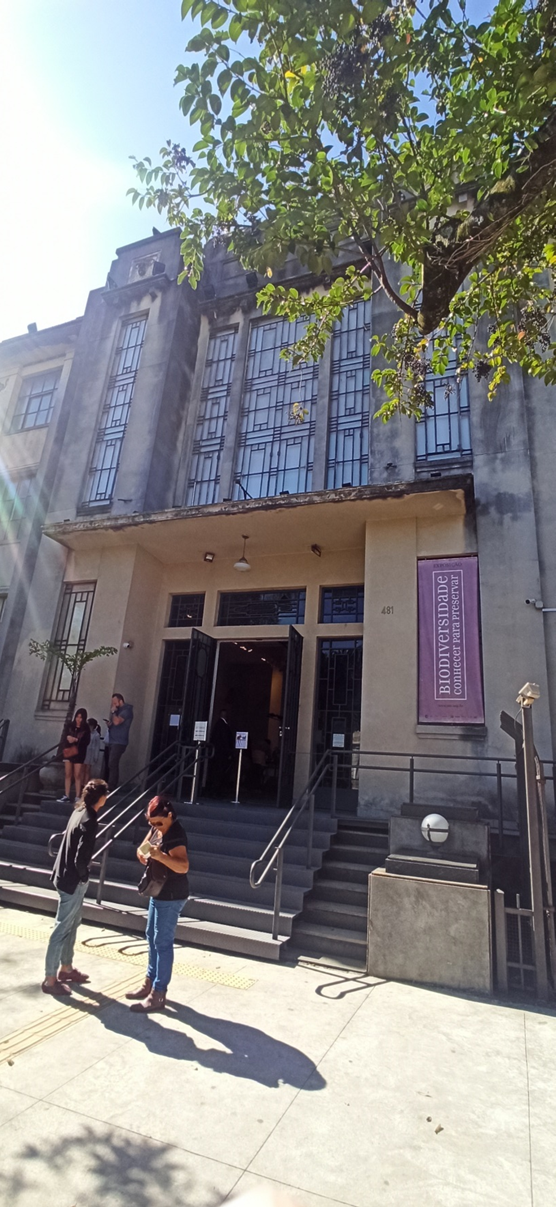
*Entrada do Museu*
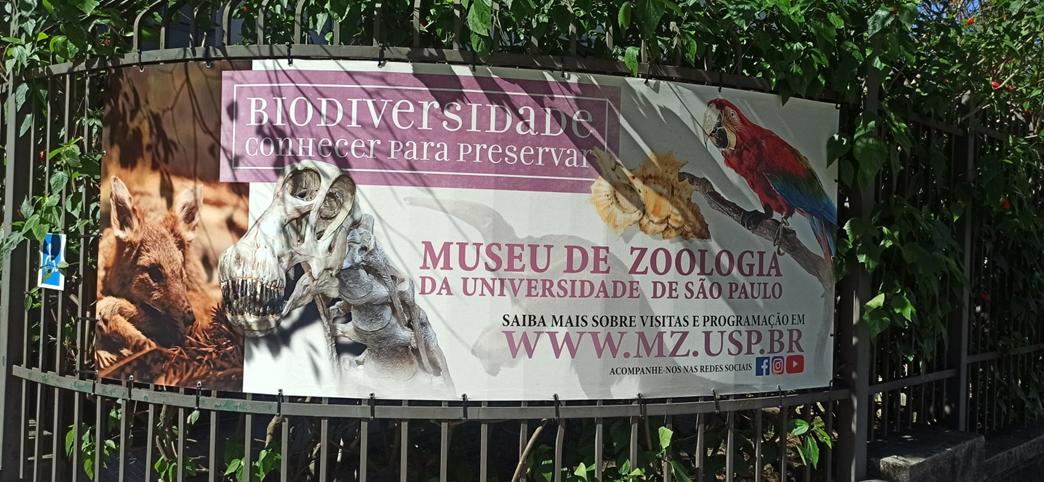
O museu esta nesse prédio desde o ano de 1940 a 1941 onde recebeu o acervo de zoologia transferido no Museu Paulista, mas somente em 1969 que passou a fazer parte da Universidade de São Paulo.
O lugar é um dos maiores detentores de acervos zoológicos da América Latina, cumprindo um grande papel da diversidade brasileira e global.
Irei mostra algumas fotos que tirei do que estava exposto para o publico.
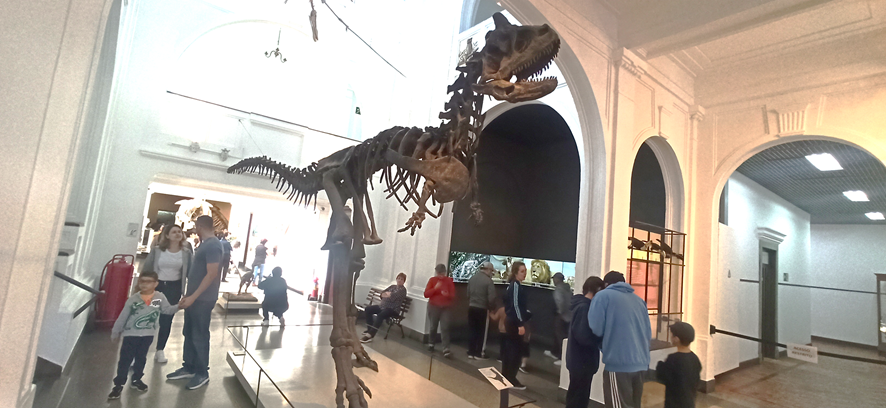
*Carnotauro - Originário de Argentina, viveu a 72 milhões de anos atrás, faz parte de uma linhagem de dinossauros conhecida como Theropoda, que inclui animais como o tiranossauro, o velociraptor e todas as espécies de aves.*
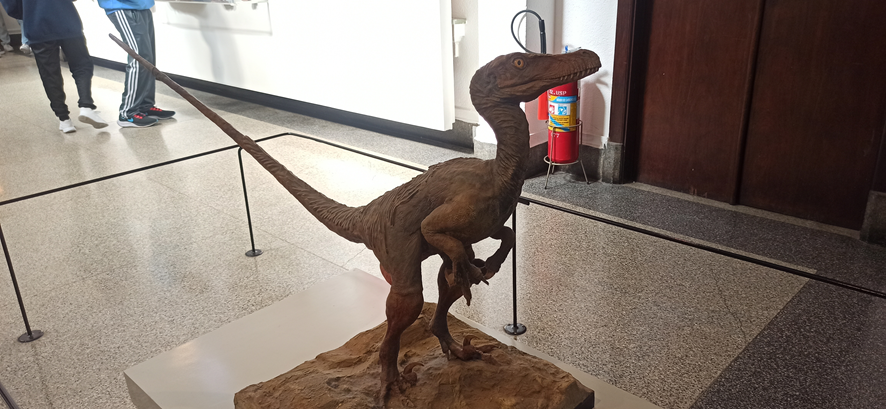
*Velociraptor - Restauração da aparência em vida, originário da Mongólia, viveu a 75 milhões de anos atrás.*
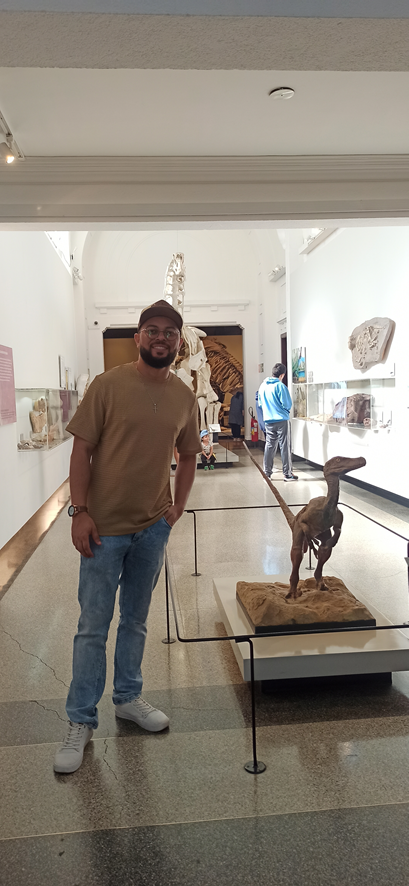
Segundo o que estava exposto as aves são os animais que formam a única linhagem de dinossauros que sobrevive ainda hoje. Existem semelhanças encontradas entre os ossos destes animais e os de espécies tais como o velociraptor, associadas às evidencias de plumagem em fosseis de alguns tipos de dinossauros corroboram para essa ideia.
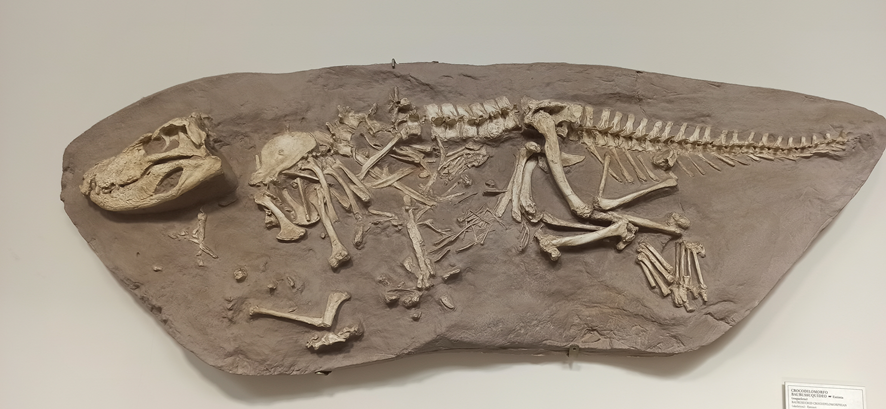
*Crocodilomorfo Baurussuquideo – Originário do Oeste de São Paulo, viveu a 80 milhões de anos atrás.*
Os crododilomorfos existiram a mais de 220 milhões de anos e no passado construíram um grupo muito diversificado que inclui predadores de membros longos adaptados a uma locomoção ágil em terra.
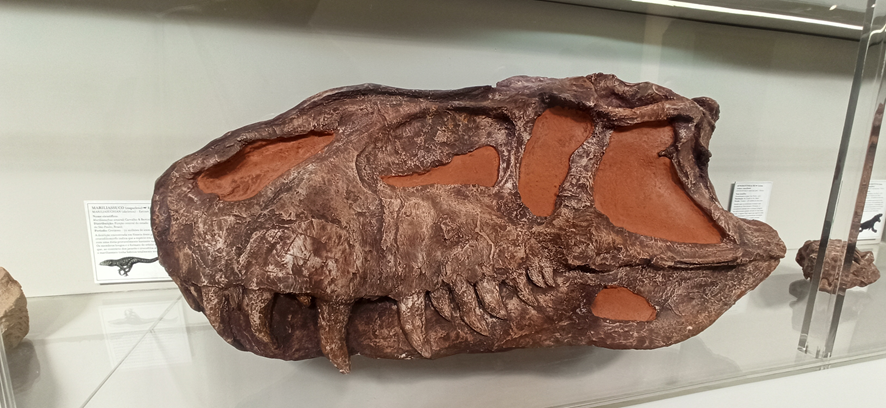
*Prestossuco – Crânio e mandíbula, originário do Rio Grande do Sul, Brasil, viveu a 238 milhões de anos atrás.*
O Prestossuco possuía características e condições que permitia a sobrevivência da espécie no ambiente, animais como ele tornaram-se dominantes em boa parte dos ecossistemas terrestres. Parentes distantes dos jacarés e crocodilos, esse carnívoros provavelmente predavam diversos tipos de animais em sua época.
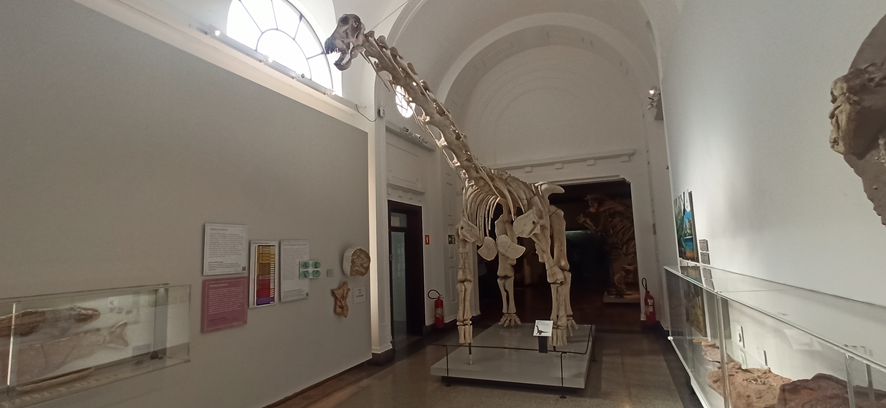
*Tapuiassauro – Originario do Norte de Minas Gerais, Brasil, viveu há 120 milhões anos atrás*.
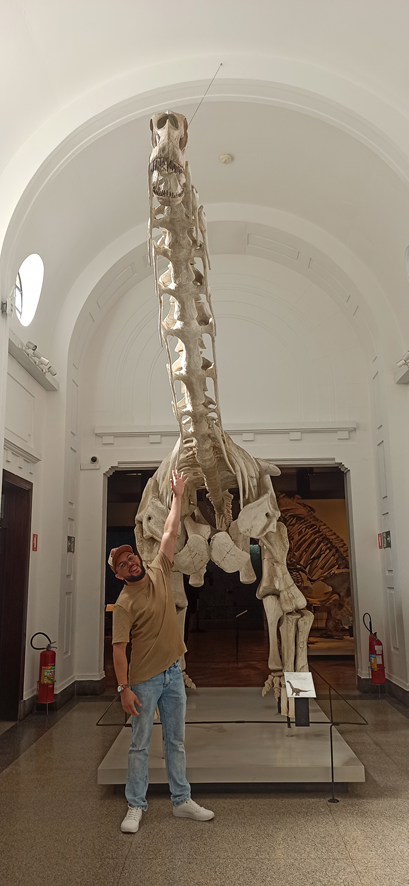
Dinossauros formaram um grupo extremamente diverso de animais. Apareceram há cerca de 230 milhões de anos e dominaram os ecossistemas terrestres por mais de 160 milhões de anos. Os fosseis bem preservados do tupuiassauro trouxeram novidades importantes ao conhecimento sobre o grupo de dinossauros do qual fizeram parte o dos titanossauros.
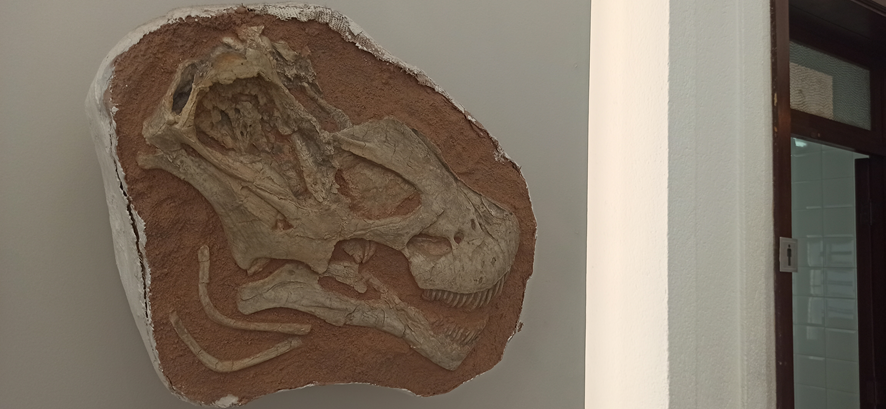
*Tupuiassouro – Cránio.*
Os titanossauros formaram uma importante linhagem nos períodos Cretáceo, esse crânio é um dos mais complexos descobertos desse grupo. Restos de titanossauros foram encontrados em diversos continentes, evidenciando a influencia das transformações das paisagens e da deriva continental na distribuição das espécies pelo planeta.
O Museu de Zoologia tem mais de 10 milhões de exemplares preservados que guarda informações sobre a espécie e o ecossistema, alguns hoje extintos. Esse patrimônio é fonte de dados importantes em biologia evolutiva, paleontologia, ecologia, e biologia molecular. Por sua vez, essa informação é utilizada em estudos de monitoramento ambiental, mudanças climáticas, algo muito importante para o presente e para o futuro do planeta.
**[EN]**
I couldn't imagine how incredible it would be to visit this museum that shows prehistoric animals among others that left me fascinated, because I had never seen it anywhere else, even more being free.

*Museum Entrance*

The museum has been in this building since 1940 to 1941 where it received the zoology collection transferred from the Paulista Museum, but only in 1969 that it became part of the University of São Paulo.
The place is one of the largest holders of zoological collections in Latin America, fulfilling a great role of Brazilian and global diversity.
I will show you some photos I took of what was exposed to the public.

*Carnotaurus - Originally from Argentina, it lived 72 million years ago, it is part of a lineage of dinosaurs known as Theropoda, which includes animals such as the tyrannosaurus, the velociraptor and all species of birds.*

*Velociraptor - Restoration of appearance in life, originated in Mongolia, lived 75 million years ago.*

According to the exhibit, birds are the animals that form the only lineage of dinosaurs that still survives today. There are similarities found between the bones of these animals and those of species such as the velociraptor, associated with evidence of plumage in fossils of some types of dinosaurs corroborate this idea.

*Crocodilomorph Baurussuquideo - Originated in the west of São Paulo, lived 80 million years ago.
Crododilomorphs have existed for more than 220 million years and in the past built a very diverse group that includes long-limbed predators adapted to agile locomotion on land.

*Prestossuco - Skull and jaw, originally from Rio Grande do Sul, Brazil, lived 238 million years ago.*
The Prestossuco had characteristics and conditions that allowed the species to survive in the environment, animals like it became dominant in much of the terrestrial ecosystems. Distant relatives of alligators and crocodiles, these carnivores probably preyed on many types of animals in their day.

*Tapuiassaurus - Originally from Northern Minas Gerais, Brazil, lived 120 million years ago*.

Dinosaurs formed an extremely diverse group of animals. They appeared about 230 million years ago and dominated terrestrial ecosystems for more than 160 million years. The well-preserved fossils of Tupuasaurus have brought important new insights into the dinosaur group of which titanosaurs were a part.

*Tupuiassouro – Cránio.*
Titanosaurs formed an important lineage in the Cretaceous periods, this skull is one of the most complex discovered of this group. Titanosaur remains have been found on several continents, evidencing the influence of landscape transformations and continental drift on the distribution of species across the planet.
The Zoology Museum has more than 10 million preserved specimens that hold information about the species and the ecosystem, some of which are now extinct. This heritage is a source of important data in evolutionary biology, paleontology, ecology, and molecular biology. In turn, this information is used in environmental monitoring studies, climate change, something very important for the present and the future of the planet.
[//]:# (!pinmapple -23.58807 lat -46.61009 long d3scr)